Tetrastigma: what does it look like and how to care for it?

A beautiful, unpretentious and fast-growing plant that resembles wild grapes - these are the words that can characterize tetrastigma. It can be ideal for those who are just starting to take their first steps in floriculture.
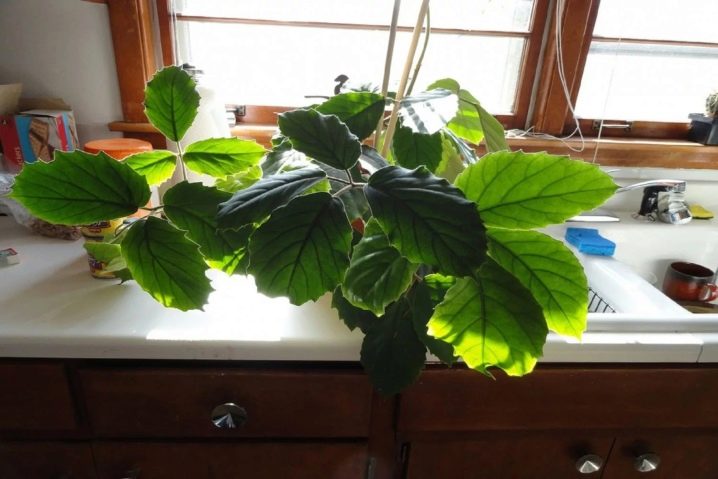
Description
Tetrastigma belongs to the grape family. Outwardly, it very much resembles a vine with mighty stems that curl. The plant is very easy to grow, and at home it can reach 2-3 meters in height. The growth of tetrastigma per year can be about a meter, but most often the plant is shortened. Such a plant is often used to decorate walls or to landscaping swimming pools.
The leaves can be three- or five-toed and have a beautiful color: outwardly they are dark green in color with shine, and the lower part of the leaf is brown with a white tint. The edges of the leaf are serrated. The maximum size of the sheet will be no more than 35 centimeters. There are many glands on the leaves, so the plant constantly secretes juice, which crystallizes very quickly. In the wild, tetrastigma tends to bloom in spring, but at home, flowering is practically not observed. Moreover, this bloom does not represent anything interesting - the most ordinary umbrellas that do not have a smell.
Tetrastigma is great for growing in greenhouses and will be an incredible decoration for your winter garden.


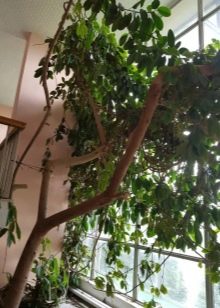
Views
The tetrastigma family has about 9 plant species, but only a couple of species can survive at home - the Vuanye tetrastigma and the lanceolate.
Vuagnier's tetrastigma is the most suitable species for growing at home. This is a vine that grows very quickly. It is a massive stem, which is covered with a rough bark and has branches. The leaves are covered with red hairs, dense and characterized by uneven edges. They reach 25 centimeters in length. The antennae with which the Vuagnier tetrastigma clings to the support are spiral-shaped.
In nature, it blooms in buds, which, after flowering, turn into raspberry-colored fruits with many seeds.
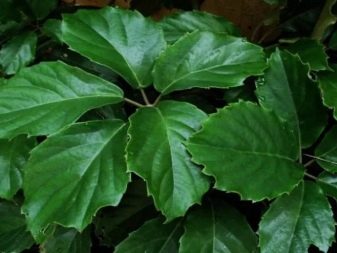
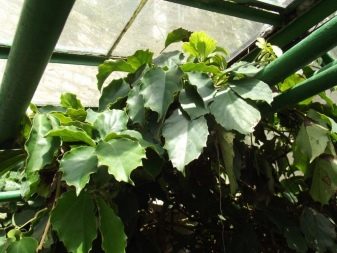
It is not often in modern apartments that you can also find a species that has a name tetrastigma lancenta. Unlike the previous species, its leaves are dark in color, resembling fish in shape. And also the leaf itself is much heavier and fleshy. But in all other respects, tetrastigma lanceolate is similar to Vuanye's tetrastigma.
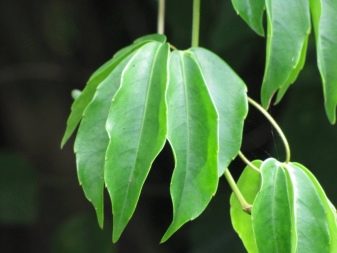

Another representative of tetrastigma is extremely rare - obovate. Its foliage is attached to the stalk with a sharp end, and the blunt side looks up. And in all other respects it resembles a lanceolate.
It is very important not to touch the leaves of these species with your hands, otherwise they may simply crumble.

Home care
In order to grow a beautiful plant, you need to use a support on which to fix the leaves. There are several types of such support: wood, plastic or metal. You can buy it at a flower shop or make it yourself.
The soil for the flower should be crumbly and nutritious. You can use a universal substrate, but it should be remembered that during the maximum growth of the plant (spring and summer), the soil must be fertilized.
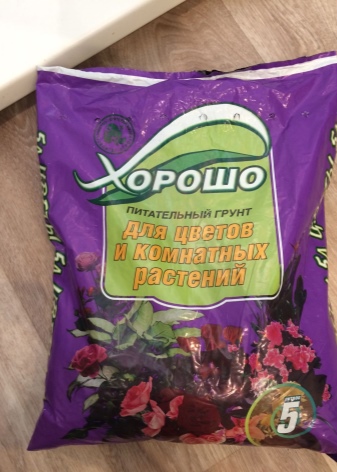
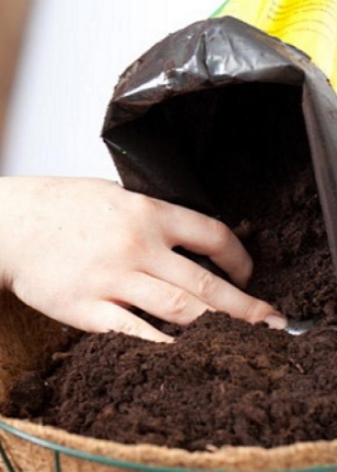
Tetrastigma is a picky plant. To ensure its full development, it is necessary to properly water and maintain moist air. The plant loves moisture, but you shouldn't flood it.Make sure the soil is dry before watering. It is not recommended to water the flower with tap water; it is better to use settled water or rainwater. Watering is done quite often in summer, but the plant rests in winter, so reduce watering to a minimum.
The plant does not like dry air, therefore, it can be regularly sprayed with cool water, and dust can be removed with a damp cloth.
Prefers tetrastigma to develop in bright and full light, but easily reconciled with dimming. Avoid direct sunlight.
Indoor grapes reduce harm from computer technology, purify the air and saturate it with oxygen.

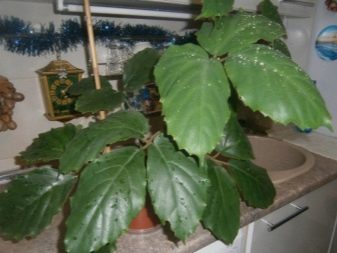
The main difficulties in growing
Tetrastigma, like many other plants, is very often attacked by spider mites, aphids and nematodes. Therefore, one must not forget from time to time to carry out prophylaxis with special drugs that are sold in any specialized store. Just adhere to the dosage directions, especially when you are first administering your treatment.
The following are the most common flower problems that occur with improper care.
- The leaves become much lighter than usual, and the shoots have begun to stretch out. The plant lacks light. You can replace natural light by using a fluorescent lamp.
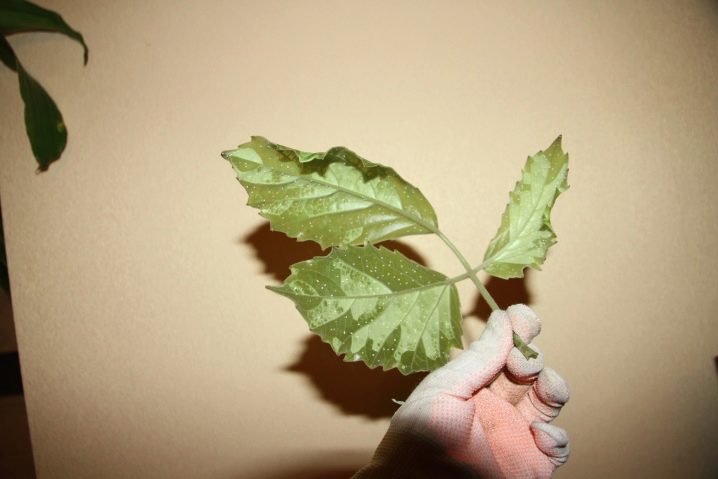
- The leaves have become very small, and the edges, in general, begin to turn black... The plant soil lacks vitamins and minerals. Use fertilizer.
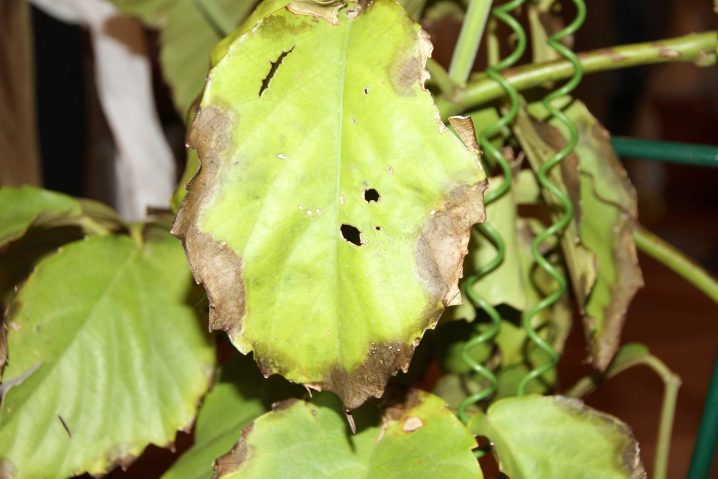
- Brown spots have appeared on the leaves, and they begin to crumble. Most likely, the plant suffered a sharp jump in temperature. Try to keep the temperature constant for the plant.
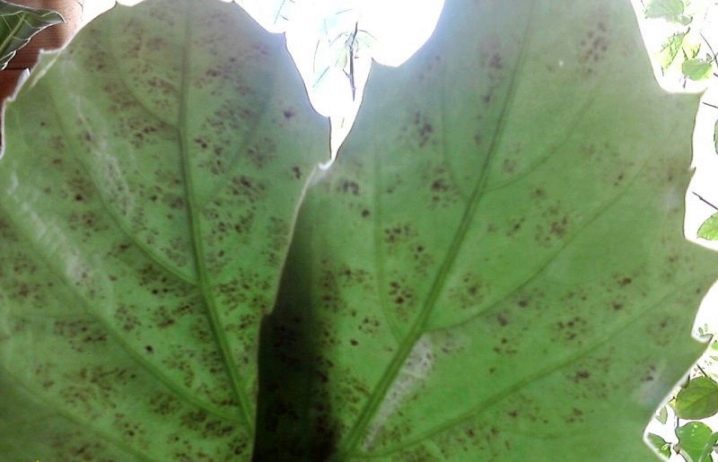
Transplant and pruning
It is necessary to transplant tetrastigma only in a situation when the previous flowerpot has become small. The pot is selected large, 4 centimeters larger than the previous one. The support of the plant is established until the moment of transplantation.
When the diameter of the pot reaches a size of more than 30 centimeters, then it is no longer necessary to replant the plant, only every year, preferably in spring, the top layer of the soil changes.
For transplantation, ready-made soil is suitable, which is sold, or you can prepare it yourself. This will require leaf and turf land, coarse sand or perlite and garden soil. Be sure to place drainage at the bottom of the pot. After transplanting, give the plant time to adapt, for this place it for 2-3 days in a dark place, do not water or spray with water.
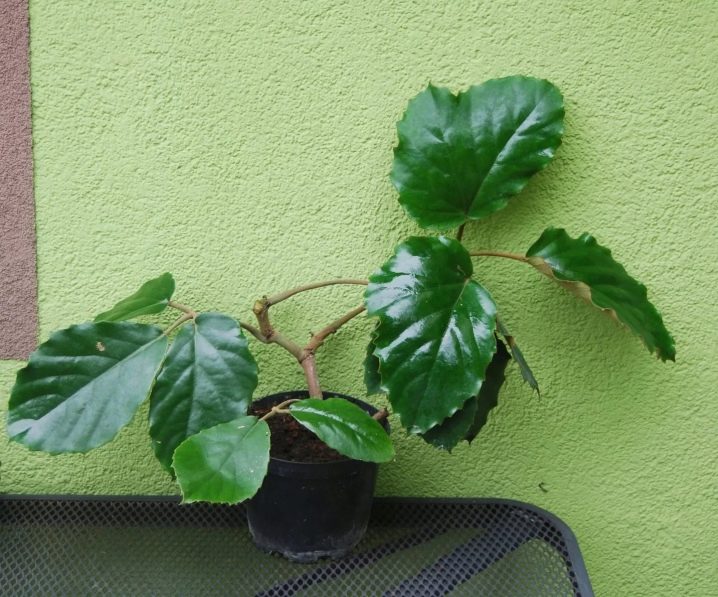
Tetrastigma does not need pruning, but when the flower reaches a fairly large size, it can be shortened. Do not remove young leaves, after which the flower may stop growing and wither.
Reproduction
The plant multiplies in several ways: layering and cuttings, parts of the stem. Reproduction is recommended in spring and summer.
If propagated by layering, it is necessary to attach part of the stem to the ground in the same flowerpot as the flower grows and wait for the root to grow. When the root hardens, the stem is carefully cut off with a sharpened knife and transplanted into a new flowerpot.
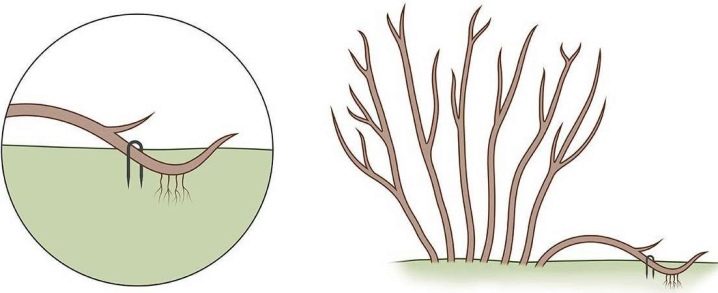
Propagation by cuttings is the simplest and most productive. To do this, you need to cut off the top of the strengthened stem and place it in a container with water for several days to form a root. After that, the plant can be moved to a new pot with light soil. It is necessary to plant the cutting in such a way that 4-5 centimeters remain above the ground, otherwise it will simply begin to rot. In the first week, the flowerpot can be placed in a greenhouse, and then gradually adapted to room conditions.
The shoot takes root very quickly, especially if the plant is placed in a bright place.
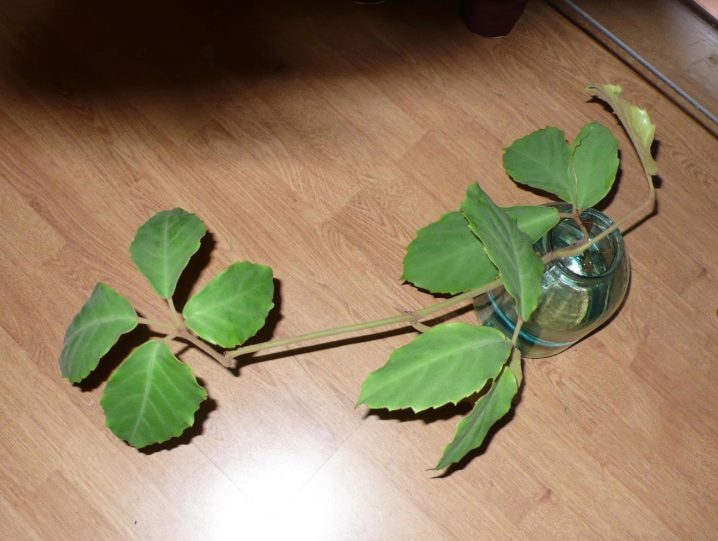
You can propagate the plant with parts of the stem. To use this method, cut off the cuttings so that a few buds and leaves remain. Then you need to put this stalk on the ground horizontally, cover it with polyethylene on top to form a small greenhouse. The greenhouse is sprayed daily.Rooting will occur within 30 days if the temperature is maintained at + 22.24 ° C.

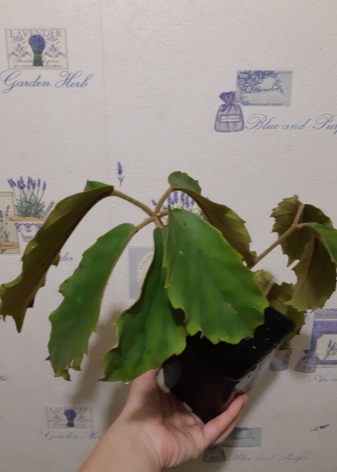
Pests
Tetrastigma is very rarely affected by pests, but this can happen with improper care.
Pests of tetrastigma:
- spider mite;
- mealybug.
A spider mite infects a plant when the indoor air is too dry. And also this pest leaves behind a plaque and a thin cobweb. To cure a flower, you need to place it briefly under a warm shower (no more than + 40 ° C), and if this procedure does not help, then you need to use an insecticide.
The mealybug will leave a slight white bloom on the leaves. It is necessary to wipe all the leaves with a tincture of garlic or calendula, and if such funds do not help, purchase an insecticide in a specialized store and follow the instructions.

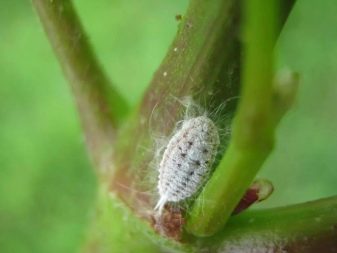
Tetrastigma is a rather large plant. Therefore, before buying, you need to make sure that there will be enough space for growing it.
If the apartment is small, it is better to abandon the decision to grow this plant in your home.
You will learn about the intricacies of growing tetrastigma in winter gardens from the video below.























The comment was sent successfully.